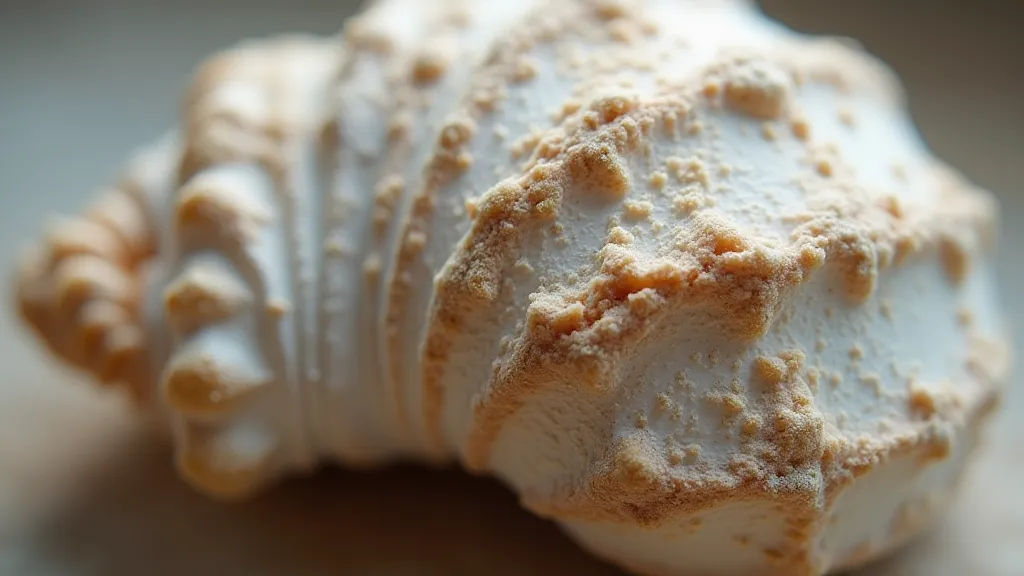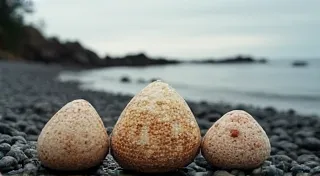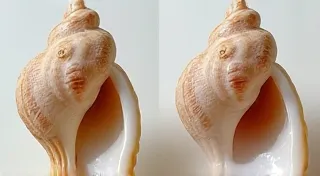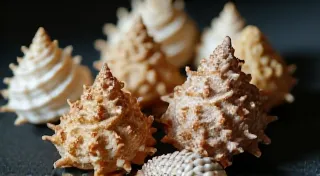The Significance of Shell Markings: Understanding Growth Patterns
Shell collecting is more than just gathering pretty objects; it's about uncovering stories etched onto the surface of these fascinating relics of the sea. Vintage shells, in particular, often display a wealth of markings that can reveal details about the mollusk’s life, growth environment, and even, to some extent, their age. Understanding these shell markings is a crucial step in accurate identification and appreciating the unique history held within each collectible shell. It can also be a key factor in determining if a shell is truly valuable; if you're hoping to discover some rare finds, paying attention to these nuances is essential.
What are Shell Markings?
Shell markings aren't random scratches; they're a record of the shell’s growth. They typically manifest as ridges, lines, pits, and sometimes even more complex patterns. These features are formed during the shell's growth process, influenced by factors like food availability, water conditions, and the mollusk’s overall health. Different species exhibit characteristic markings, providing a significant aid in identification. Correctly identifying a shell starts with a careful examination of these markings, and sometimes, even requires ruling out potential misidentifications – particularly with species like cone shells; a guide to spotting a false cone shell can be invaluable for novice collectors. The process of identifying a shell involves more than just visual assessment; a deep dive into understanding the historical context and potential environmental factors at play can dramatically improve accuracy.

Types of Shell Markings & What They Mean
- Growth Lines (Annuli): These are the most common markings and resemble rings on a tree trunk. They represent periods of slower or faster growth. Closely spaced lines indicate slower growth, often due to periods of environmental stress like colder temperatures or reduced food. Widely spaced lines suggest periods of rapid growth. While sometimes used to estimate age, the accuracy is often limited as environmental factors vary significantly. Interpreting these lines requires a holistic understanding of the shell’s history, something that can be further enhanced by noting the geographic location where it was found. The precise dating of shells based solely on growth lines is a challenge, and often requires cross-referencing with known historical climate data.
- Ribs & Ridges: These are raised features that run along the shell’s surface. Their prominence and spacing vary greatly between species, often serving as a key identifier. The smoothness or roughness of the ribs can also provide clues about the water conditions the mollusk inhabited. The combination of rib patterns and overall shell shape is often critical for a definitive identification. The complexity of rib patterns is truly fascinating, and understanding how they contribute to a shell's overall identification is a core skill for any serious collector.
- Pits & Notches: Small pits or indentations can be caused by predation, disease, or injury. Notches often indicate where a predator attempted to feed on the shell. The placement and severity of these markings can sometimes provide clues about the type of predator involved. The study of these markings, in essence, becomes a forensic investigation into the shell’s life story.
- Lines of Reticulation: These are fine, intersecting lines that create a "net-like" pattern. They are more common in certain species and can be incredibly detailed. The complexity and density of these lines can provide a surprisingly accurate indication of the species and potentially even the age of the shell. Examining shells and identifying these characteristics can sometimes feel like decoding an intricate puzzle, each line contributing a vital piece of information.
- Striae: These are faint, parallel lines that run along the shell’s surface. They’re often more difficult to see without careful observation. Good lighting and magnification are often required to distinguish striae from other surface textures.

Using Markings for Identification
Many identification guides rely heavily on shell markings. Pay close attention to the following:
- Pattern Consistency: Are the markings uniform across the entire shell, or are they localized to specific areas? Localized markings can often indicate specific events in the shell’s life, such as a localized injury or period of stress.
- Spacing & Thickness: Note the distance between markings and their relative thickness. Consistent patterns of spacing, even subtle variations, are crucial identifiers.
- Texture: Are the markings smooth, rough, or raised? The texture, alongside the overall visual appearance, contributes significantly to the identification process.
- Shell Shape in Conjunction with Markings: The markings should be assessed in relation to the overall shape and structure of the shell. Shell shape and marking patterns rarely occur in isolation; they’re intertwined characteristics.
For example, the distinctive ridged surface of a scallop is a crucial identifier. Similarly, the complex reticulation of some olive shells is a defining characteristic. Furthermore, knowing the region where the shell was found can often narrow down possibilities; combining shell identification with location data can be incredibly useful for pinpointing the species. This geographic element is critical as subtle variations in environmental conditions across different locations can significantly impact shell development.
Preserving Your Vintage Shell Collection & Observing Markings
Proper handling and storage are essential to preserve the integrity of your vintage shell collection. Avoid abrasive cleaners and excessive sunlight exposure. Sunlight can fade the shell’s color and potentially damage the delicate markings. Store shells in a cool, dark, and dry location. When examining shells, use a magnifying glass or jeweler's loupe to observe the details of the markings. Good lighting is also crucial; natural light is often best, but a focused lamp can also be helpful. Consider documenting your findings with photographs – and it’s a good idea to follow some best practices for photographing vintage shells to ensure quality images for future reference. Documenting your collection with high-quality images isn’t just about preserving memories; it’s a vital step in scientific observation and sharing knowledge.
Beyond simple identification, understanding shell markings allows you to build a richer appreciation for the life cycle of the mollusk. Each ring represents a period of growth, reflecting environmental conditions and the shell’s interactions with its surroundings. A shell is more than just a beautiful object; it’s a historical record, a testament to the passage of time and the dynamics of marine ecosystems.

Advanced Observations: Environmental Clues and Shell Health
Experienced shell collectors often use markings to infer more than just species identification. Closely spaced growth lines, for instance, can suggest periods of food scarcity or extreme temperature fluctuations. Abnormal patterns, such as asymmetrical growth or localized pitting, can be signs of disease or parasite infestation. Examining shells from different locations can provide valuable insights into regional environmental variations and their impact on mollusk growth. The study of shell markings is an ongoing pursuit, with new techniques and interpretations constantly emerging. For instance, isotopic analysis can reveal insights into the diet of the mollusk and the salinity of the water it inhabited, painting a much more complete picture of its life. These analyses offer a window into the past, allowing us to reconstruct environmental conditions and understand how they shaped the evolution of these remarkable creatures. Furthermore, advanced imaging technologies like micro-CT scanning provide an unprecedented level of detail, allowing scientists to study the internal structures of shells without causing damage.
The Future of Shell Markings Research
Advances in technology are opening up new avenues for studying shell markings. Micro-CT scanning allows scientists to create detailed 3D models of shells, revealing internal structures and growth patterns that are invisible to the naked eye. Isotope analysis can provide information about the mollusk's diet and the water conditions it inhabited. As our understanding of shell markings deepens, we can expect to gain even greater insights into the lives of these fascinating creatures and the health of our oceans. Ultimately, preserving these stories lies in careful observation and responsible collecting, ensuring future generations can also appreciate the wisdom etched onto these relics of the sea. The ability to connect shell markings with historical climate data promises to revolutionize our understanding of past environmental changes, offering valuable insights into the challenges facing our oceans today. Continuing to refine techniques for data analysis and incorporating machine learning algorithms may hold the key to unlocking even more complex patterns and relationships within shell markings. These endeavors underscore the significance of continued support for scientific research and education in this field, ensuring that future generations have the knowledge and tools to continue unraveling the mysteries held within these extraordinary objects.





